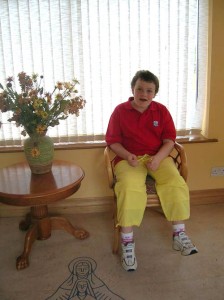
Sanfilippo disease is a mucopolysaccharide disease also known as MPS lll. It takes its name from Dr. Sanfilippo who was one of the doctors from the United States who described the condition in 1963.
What causes this disease?
There is a continuous process in the body of replacing used materials and breaking them down for disposal. Children with Sanfilippo disease are missing an enzyme which is essential in cutting up the used mucopolysaccharides. The incompletely broken down mucopolysaccharides remain stored in cells in the body causing progressive damage. Babies and small children may show little sign of the disease but, as more and more cells become damaged, symptoms start to appear.
How severely will my child be affected?
To date four different enzyme deficiencies have been found to cause Sanfilippo disease and so the condition is described as type A,B,C or D. Type A is the most common form found in most populations.
- MPS lllA is missing the enzyme heparan N sulphatase
- MPS lllB is missing alpha-N-acetylglucosaminidase
- MPS lllC is missing acetyl-CoA: alpha-glucosaminide acetyltransferase
- MPS lllD is missing N-acetylglucosamine-6-sulphatase
However it is important to note that there are no significant clinical (physical) differences between the different subtypes of MPS III, although there have been some very mild cases of the B form where the sufferers have remained relatively unaffected into adult life. The latest understanding is that some people seem to produce some enzyme activity which helps to slow down the progression of the disease while those with more severe symptoms appear to have no enzyme activity at all.
How is the disease inherited ?
We all have genes inherited from our parents which control whether we are tall, short, fair etc. Some genes we inherit are ‘recessive’, that is to say we carry the gene but it does not have any effect on our development. Sanfilippo disease is caused by a recessive gene. If an adult carrying the abnormal gene has a partner who is another carrier there will be a one in four chance with every pregnancy that the child will inherit the defective gene from each parent and will suffer from the disease.
There is a two in three chance that unaffected brothers and sisters of Sanfilippo sufferers will be carriers. They can be reassured however that, as the disease is so rare, the chance of having a partner who is another carrier is very slight provided this partner is not a cousin or other blood relative.
